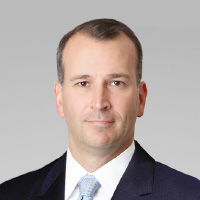Ares Management
Ares Management Corporation (NYSE:ARES) is a leading global alternative investment manager offering clients complementary primary and secondary investment solutions across the credit, private equity, real estate and infrastructure asset classes. We seek to provide flexible capital to support businesses and create value for our stakeholders and within our communities. By collaborating across our investment groups, we aim to generate consistent and attractive investment returns throughout market cycles. As of December 31, 2023, Ares Management Corporation's global platform had approximately $419 billion of assets under management with approximately 2,850 employees operating across North America, Europe, Asia Pacific and the Middle East. For more information, please visit www.aresmgmt.com.
Robert Torretti
Partner
Co-Head of Insurance, Americas Relationship Management
rtorretti@aresmgmt.com212-515-3385
Amanda Healy
Partner
Co-Head of Insurance, Americas Relationship Management
ahealy@aresmgmt.com212-515-3351
www.aresmgmt.com
Ares Management
245 Park Avenue, 44th Floor,
New York, NY 10167






